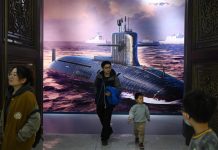The air quality index in Delhi, the capital of India’s political capital has rapidly deteriorated. A layer of thick smog continues to envelope the country’s capital and other adjoining areas of the country. One British media even termed New Delhi as a – “Gas Chamber”.
India – The World’s Fastest Growing Economy Chocked By Pollution
According to the reports released by the US Embassy in India, particulate levels were 19 times the World Health Organisation (WHO) safe maximum. A UN report says that India is home to the 14 out of 15 most populated cities in the world.
Air pollution in India is estimated to kill over 1.5 million people every year and turns Delhi into the fifth largest killer in India. The sixth-biggest cause of death globally is small-particle pollution, chemical specks that enter the lungs and can contribute to cardiovascular diseases, lung cancer, and infections. Particles smaller than 2.5 microns can even enter the bloodstream.
In 2014, Delhi contested a WHO finding which reported that it had dirtier air than Beijing — the most polluted capital back then. Today, Beijing is readying to exit 200 most polluted cities while the Indian capital finds itself on the opposite end.
India is the World’s Second Most Polluted Country, But Which Asian Country Tops the List?
Netizens have been comparing India’s pollution control methods to that of China’s while Chinese blue skies caught the world attention. Before 2013, Chinese cities including Beijing were choked in smog with a PM 2.5 figure released by the US Embassy.
No one could have imagined that the skies would see better days. In just four years, Beijing has improved its air quality by setting time-bound targets and implementing a comprehensive regional action plan.
Not long ago, Delhi and Beijing competed with each other for the infamous tag of being the world’s most polluted city. Beijing beat Delhi hands down. Then things changed. While air quality in Beijing began to improve steadily, pollution levels in Delhi kept rising and is even worse what China once suffered.
Due to increasing discontent, the Chinese government quickly responded to the public outcry who prompted the government to launch a comprehensive action plan to tackle air pollution. It was based on a regional approach and identified key polluted regions such as Beijing-Tianjin-Hebei for time-bound action.
Venezuela’s president Nicolas Maduro accused of crimes against humanity
The government sought to set specific pollution reduction targets and defined measures to guide the development of regional action plans. The China Air Quality Improvement Report 2013-18 released by Ministry of Ecology and Environment in June stated that practice of air pollution control in the past six years, Beijing had explored and formed a model which highlights government’s dominant role and participation from enterprises and the general public. This was a historic triumph.
Whereas, the Indian government has tried to pace up with the public concern and world pressure to bring a change but achieved nothing. One of the major reasons why India is losing the battle can be the ignorance of the hazardous condition.
Cloud Over Dalai Lama’s Successor But China Aggressively Promoting Buddhism In Asia
The leaders are busy fighting the political battle that they are inconsiderate to the problems and issues of the public. India compared to China has fundamentally weak political system. Without proper coordinated planning and execution, the air pollution could only worsen in Delhi and the city could be deserted.
There are many lessons India can learn from China like environmental protection. The bottom line is that Delhi faces the same challenges as Beijing did a few years ago. What India lacks is political willingness and public anger to force the government to take hard action and work together for bluer skies.
With Inputs from The Global Times, China




